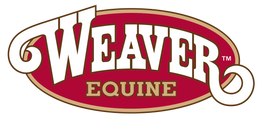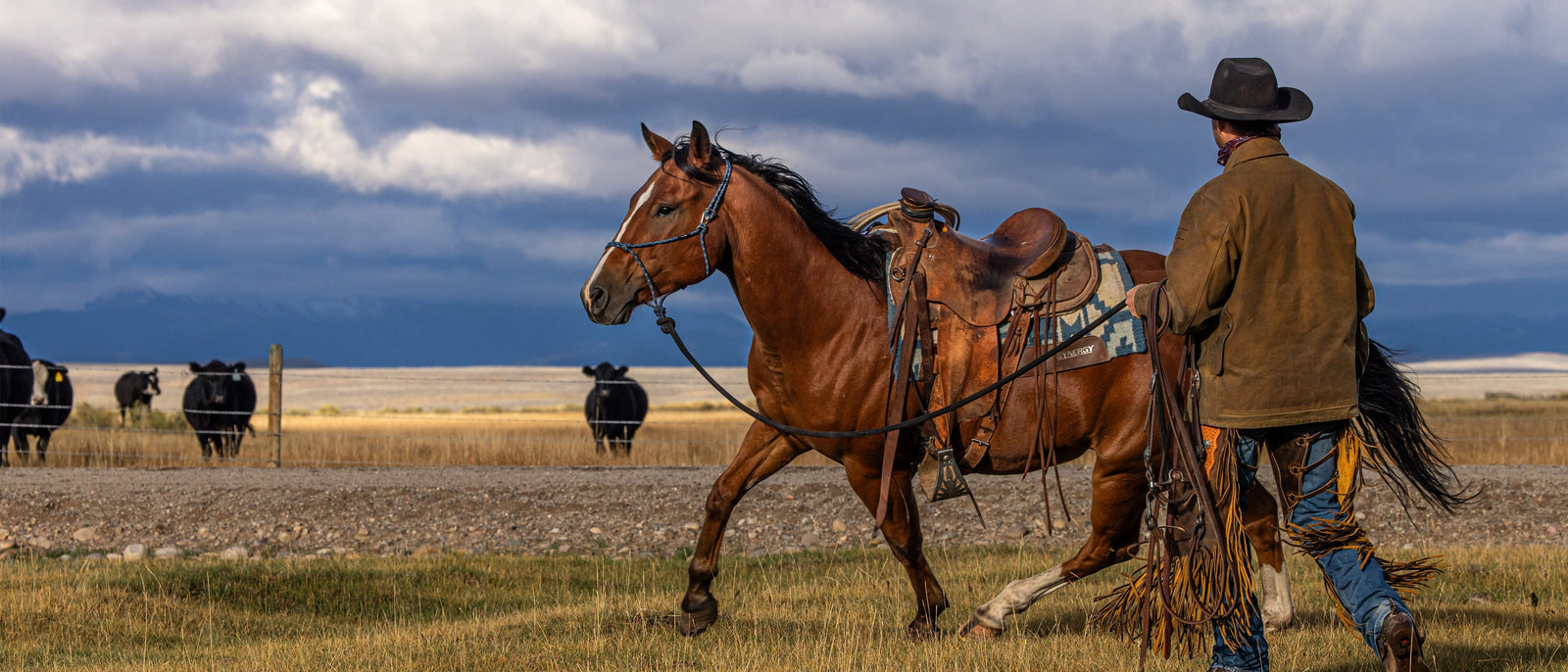A rope halter is one of the simplest and most effective tools for clear communication with your horse. Properly fitted, it encourages softness, responsiveness, and respect through feel rather than force. But with so many variations in rope thickness, stiffness, and design, choosing the right one can make all the difference in comfort and connection.
This guide explores how rope halters work, what to look for in fit and material, and how to pick the best design for your horse’s needs, along with insights from riders who use them every day.
Why Rope Halters Work
Rope halters are designed to enhance communication, not to simply control. The narrow rope and strategic knots create focused pressure points that encourage your horse to yield to light cues.
Key benefits include:
- Precision: Allows for subtle communication and refined pressure-and-release timing.
- Durability: Quality rope resists rot and abrasion while holding shape for years.
- Simplicity: One-piece, hardware-free construction means fewer failure points.
- Versatility: Effective for groundwork, training, riding, or trail use.
As one experienced trainer shared, “I’ve been a fan of hand-tied halters for 40 years. They’re the only kind I keep in my barn—better communication, better respect, and no hardware to break.
Fit and Size Matter
A well-fitted rope halter supports both comfort and control.
- Noseband placement: About two finger-widths below the cheekbone.
- Throat knot: Centered under the jaw, avoiding pressure on the throatlatch.
- Cheek knots: Even on both sides, balancing pressure across the face.
Rope diameter also affects feel:
- ¼” rope: Thinner and more precise, favored for training and responsiveness.
- 5/16” or ⅜” rope: Slightly thicker, offering a forgiving feel for everyday use.
If you’ve ever wondered “what size rope halter do I need?” start with your horse’s general halter size, then check the fit and symmetry of the knots to confirm a secure, comfortable placement. Our rope halter size chart can help.

Rope Stiffness and Function
A halter’s stiffness determines how it holds shape and transmits cues. Too soft, and it loses definition. Too stiff, and it won’t conform to the horse’s head. The best halters balance structure with pliability—firm enough for clarity, flexible enough for comfort.
Which rope halter is the best for my purpose?
Once you understand fit and feel, selecting the right halter for your goals becomes simple. Below are our recommendations for specific purposes, from everyday use to lunging and training to trail riding and leading horses through the mountains and tying to highlines.
All our Silvertip® halters are built from rope that’s made in the USA and hand-tied at Weaver Equine in Mt. Hope, Ohio.
They also come with a lifetime guarantee.
We’re that confident Silvertip rope halters are the best.
1. The Best Rope Halter for Everyday Use – Silvertip No. 95 Rope Halter
The Silvertip No. 95 is the best rope halter for daily use. Hand-tied from 5/16” diamond-braid polypropylene rope, it offers a medium-firm feel. It’s strong enough for groundwork, soft enough for comfort. With no hardware to break and a shape that stays consistent, it’s a favorite for riders who value reliability.
Best for: Groundwork, leading, tying, and under-bridle use.
Why it works: Balanced feel for everyday communication.
Customers Say:
“These halters are always my go-to for groundwork and riding. Nothing else even comes close!”
“Love my Silvertip 95! The large size fits my TWH perfectly, and the color choices are great.”
“Excellent quality at a reasonable price. Fits my draft cross just right.”
2. The Best Rope Halter for Refined Communication & Training – Silvertip® Big Sky Rope Halter

The Big Sky is crafted from ¼” double-braid polypropylene rope, offering more precise communication with a sleek, refined look. It’s supple enough to lay nicely on the horse’s head yet durable enough for serious training work.
Best for: Training, trail riding, or liberty work.
Why it works: Thinner rope provides clearer cues and a lighter connection.
Customers Say:
“The feel I get with this halter is amazing—absolute game changer!”
“Love the weight and feel of this halter for developing softness in my horses! I have one for each of my working horses!”
“Best halter I’ve used. It’s flexible, fits beautifully, and my horses always look great in it.”
3. The Best Rope Halter for Focused Training – Silvertip® Four Knot Rope Halter
For horses that need a little more direct communication, the Four Knot Rope Halter adds two strategically placed knots on the noseband to encourage softness and respect. Made from ¼” accessory cord, it’s popular with clinicians and trainers for improving responsiveness through refined, consistent pressure.
Best for: Groundwork, halter-breaking, or refining respect.
Why it works: Extra knots enhance definition in your cues.
Customers Say:
“My young mustang will push right through any other halter, but he respects this one—and I can communicate with a lighter touch.”
“Great for halter-breaking and teaching basics. Highly recommend.”
“Exactly what I needed. High quality and perfectly described.”
4. The Best Rope Halter for Lunging and Movement Work – Silvertip® Transition Rope Halter with Sliding Ring

The Transition Rope Halter is designed for movement-based work. Its sliding ring allows the lead to glide freely as your horse bends or circles, preventing head twisting and promoting natural alignment. Crafted from ¼” premium double-braid rope, it combines structure with responsiveness for clear, consistent cues.
Best for: Lunging, liberty, and colt starting.
Why it works: Allows natural head movement while maintaining control.
Customers Say:
“I bought this halter for my 6-month-old colt—what an amazing difference! It’s made training smoother from day one.”
“Excellent quality and great for colts. Best training halter I’ve used.”
5. The Best Rope Halter For Trail Riding & Packing – Silvertip® Trailblazer Rope Halter with 12’ Lead
Built for versatility, the Trailblazer Halter features a ¼” kernmantle rope that fits easily under a bridle and includes a 12’ yacht-braid lead—ideal for tying on the trail or using a highline. Its lightweight, flexible construction makes it a favorite among riders who want practicality without bulk.
Best for: Trail riding, packing, and tying during travel.
Why it works: Streamlined design with built-in lead for convenience.
Customers Say:
“I LOVE this set! Light enough to use under the bridle on the trail. Lead rope is also light. I’ve had to cut lead ropes in the backcountry, and this would be easy to cut! If you want heavy duty, look for something else. If you want good quality lightweight for trails, get this!”
6. The Best Rope Halter For Visibility & Safety – Silvertip® Reflective Rope Halter
When visibility matters, the Reflective Rope Halter adds peace of mind. Woven reflective tracers enhance low-light safety without changing the halter’s feel or performance. It’s ideal for riders who start early, finish late, or ride near traffic. Each one is crafted and hand-tied in the USA from U.S.-made reflective accessory cord.
Best for: Low-light riding, especially around traffic
Why it works: Adds safety and visibility without extra weight.
Customers Say:
“We have started using this rope halter under the bridle for night safety—it’s lightweight, fits great, and lights up when cars pass. Definitely worth it.”
Why Silvertip Rope Halters are the Best
Whether you’re teaching a young horse to lead, refining groundwork, or heading out on the trail, the right halter should feel like an extension of your hands—communicating clearly, comfortably, and consistently.
As one customer summed it up perfectly:
“LOVE the Silvertip Halter! Fits most every horse I work with. Such a great tool to have. It’s perfect for lunging, ponying, or using it for everyday use around the ranch.”
Frequently Asked Questions About Rope Halters
What is the difference between a rope halter and a nylon halter?
A rope halter is built from a single piece of rope and uses knots for pressure points, allowing refined communication through light cues. Nylon halters are flat, with wide webbing and hardware, designed primarily for restraint and everyday handling. Rope halters are favored for training and groundwork because they promote responsiveness without force.
Are rope halters better for training?
Yes—rope halters provide clearer, more targeted feedback. The thinner rope and knot placement help horses learn to yield to subtle pressure, making them ideal for groundwork, lunging, and building softness. They encourage respect and connection rather than resistance.
What size rope halter do I need?
Match your rope halter size (Small, Average, Large, Draft) to your horse’s build using the rope halter size chart below, then check the fit: the noseband should sit two fingers below the cheekbone, and the cheek knots should be even on both sides. A halter that fits too loosely can shift, while one too tight may cause pressure points.

How do I fit a rope halter correctly?
Begin by placing the halter’s noseband across the horse’s nose and bringing the crown piece behind the ears. Tie the loop knot snugly but not tight; the tail end should point down the cheek, not toward the eye. The goal is a stable fit that stays centered and allows consistent cues.
This video from Weaver Equine shows how to fit and tie a Silvertip rope halter.
What material is best for a rope halter?
Look for high-quality, pre-stretched polypropylene or polyester rope. These materials hold shape, resist mildew, and provide the right balance of structure and flexibility. All Silvertip® Rope Halters use rope braided and tied in the USA to exacting specifications.
Are premium rope halters worth the price?
Yes. Premium halters, such as the Silvertip® line, are hand-tied in the USA from American-made rope for precision, consistency, and longevity. They hold shape, maintain knot placement, and last for years of use. Investing in a quality rope halter means better communication, comfort, and long-term durability. And they come with a lifetime guarantee. You can’t go wrong with that.


